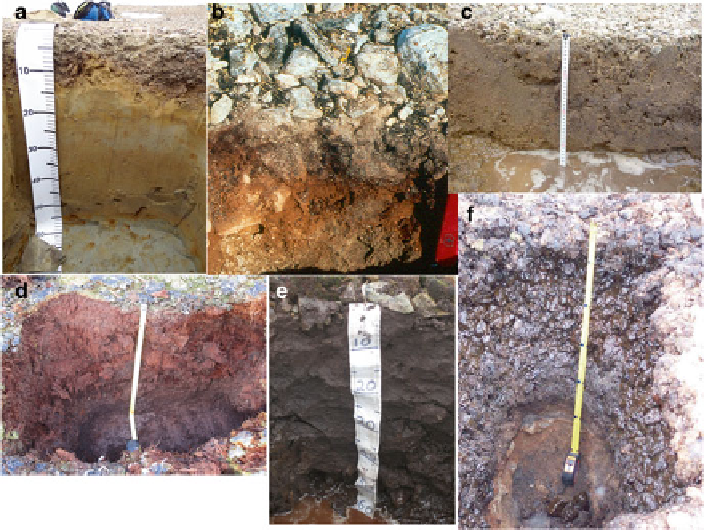Geoscience Reference
In-Depth Information
Fig. 9.2
Soils of limited extent along the western Antarctic Peninsula and in coastal East
Antarctica: (
a
) Sulfuric Haplorthel on Seymour Island (photo by C. Schaefer); (
b
) Typic Spodorthel
in abandoned penguin rookery, Casey Station, Wilkes Land (photo by H.-P. Blume and M. Bölter);
(
c
) Typic Aquorthel in the Larsemann Hills (photo by N. Mergelov); (
d
) Fibrist at Cierva Point,
western Antarctic Peninsula (photo by J. Bockheim); (
e
) Saprist at Cierva Point (photo by
J. Bockheim); (
f
) ornithogenic soil, Cape Hallett, north Victoria Land (photo by M. Balks)
9.3.3
Inland Mountains
The inland mountains by far account for the most ice-free area of Antarctica (93 %).
Although there are longitudinal climatic gradients in valleys extending from the
Transantarctic Mountains to the Ross Sea, the properties of soils in the inland mountains
generally refl ect hyperarid and hypergelic conditions. The soils of the inland mountains
generally have low amounts of silt and clay, very low quantities of SOC, abundant solu-
ble salts, and alkaline pH values (Table
9.6
). Examples of common and less common
soils in the inland mountains are shown in Figs.
9.3
and
9.4
, respectively.
9.4
Soil-Forming Processes
These soil-forming factors lead to soil-forming processes that vary in magnitude by
ice-free region in Antarctica. The relative importance of each of these processes is
indicated by one asterisk (*) as being unimportant or absent, two asterisks (**) as

